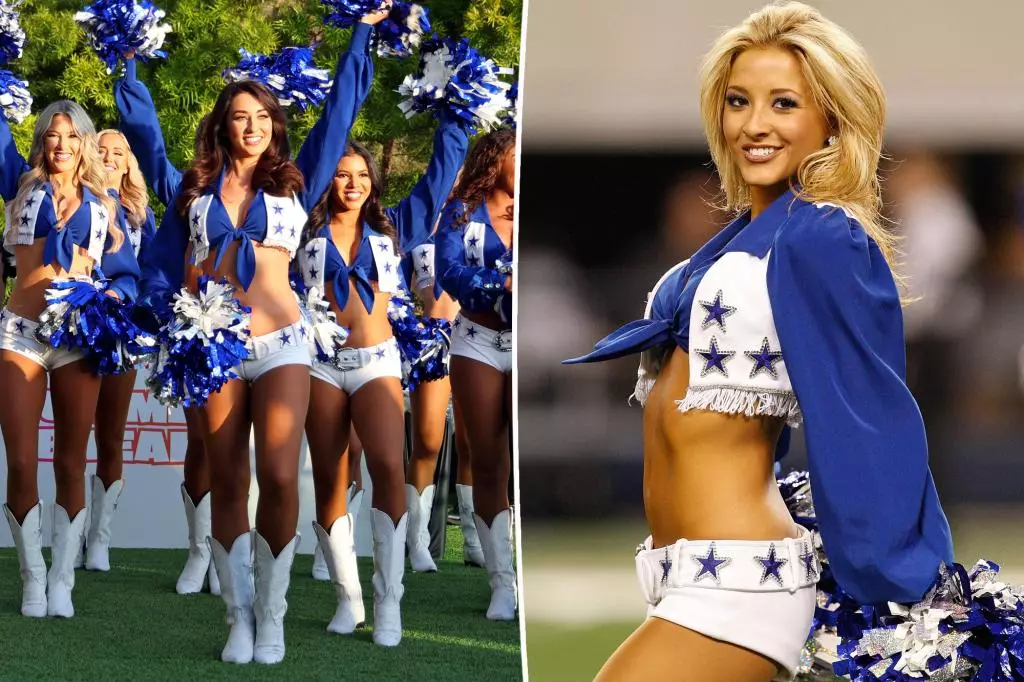The Dallas Cowboys Cheerleaders have recently taken a monumental step towards financial equity, achieving a staggering 400 percent salary increase that goes into effect in the 2025 NFL season. This dramatic pay rise, highlighted in their Netflix series “America’s Sweethearts: Dallas Cowboys Cheerleaders,” not only exemplifies their struggle for a livable wage but also serves as a beacon of hope for cheerleaders across the country. The journey they undertook, marked by tables turned and battles fought, resonates deeply within the realm of female empowerment in sports, a domain historically rife with deeply ingrained inequalities.
From Struggling to Thriving
Jada McLean, a seasoned dancer with five years of experience, recently shed light on the financial pressures faced by cheerleaders before the dramatic pay raise. Previously earning only $15 per hour and approximately $500 for each game appearance, she expressed that many of her colleagues still grapple with significant economic hardships. Despite the jump to a potential $75 per hour, McLean’s candidness about the lack of health benefits highlights that financial retribution remains incomplete. Her assertion that the cheerleading role should afford them a sustainable living is not merely a plea; it is an outright challenge to the status quo that has left them—and many in similar professions—vulnerable.
A History of Struggle
Historically, cheerleaders have faced unjust financial compensation, often viewing their time and talent through an exploitative lens. Payne and struggle were encapsulated in Erica Wilkins’ lawsuit filed back in 2018, which exposed the harsh realities of pay that hollowed just $7 an hour for their passion and dedication. The stories of former cheerleaders, including Kristin Westbrook, who received meager payments of $15 an hour and flat fees despite the fame and merchandise sold featuring their likeness, showcase an unsettling truth: the disparity that has long existed illustrates both the undervaluation of their artistry and the neglect of their welfare.
The disparity would have made for a volatile environment had it not been for unity among the cheerleaders. There’s strength in numbers, and the sentiment among the team that felt proactive was palpable. An attempted strike, recounted by Armani Latimer, demonstrates not just a plea for more financial recognition, but a real hunger for respect—a longing to be acknowledged as professionals rather than mere entertainment props. This passionate push has resulted in fruit that speaks not just to their current wage but to an elevation of their entire profession.
Leadership Through Vulnerability
The courage displayed by these cheerleaders to challenge management and voice their concerns not only brought about change but served as an inspiring model for collective action. By using their platform on a popular show, they garnered attention to their plight in a world eager to embrace narratives of empowerment. The emotional weight carried by Latimer as she reflected on her contribution to this change is profoundly moving; it underscores the interconnectedness of their experiences and the impact they can have on the next generation.
This shift in salary is more than just a numbers game; it’s indicative of a movement towards accountability within organizations that have profited from their labor while sidestepping the responsibility of fair treatment. The Cowboys’ cheerleaders are not only reclaiming financial agency but are also transforming the culture that has long maintained a hierarchy of worth based on gender and visibility.
The Fight is Not Over
As the cheerleaders bask in the glow of their recent victory, their story is a stark reminder that the fight for fair compensation and benefits is still ongoing. The increased hourly wage, while promising, doesn’t detract from the reality that they remain without health insurance, a critical necessity that underscores the importance of pushing for complete equitable treatment. No victory should be celebrated in isolation, and for the Dallas Cowboys Cheerleaders, the story is just beginning—they have lit a flame of activism that could forge paths for many other cheerleaders in the nation as they strive for respect and recognition.
This battle reflects broader social issues regarding women in sports and their long-standing struggles against financial inequity. Each cheerleader’s personal story contributes to a much larger narrative about challenging outdated norms and advocating for one’s worth. This momentum, fueled by their collective resoluteness, suggests that the landscape for cheerleaders in the NFL and beyond is beginning to shift, making way for a future where passion and professionalism are rewarded justly.

